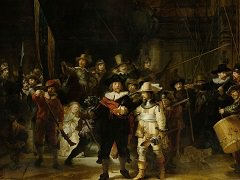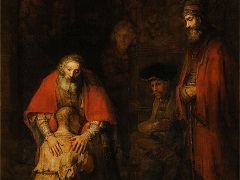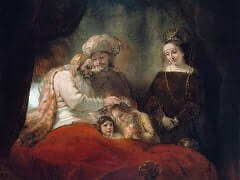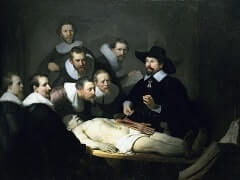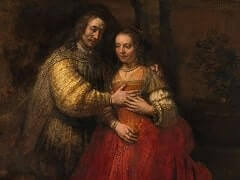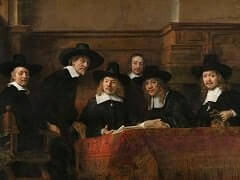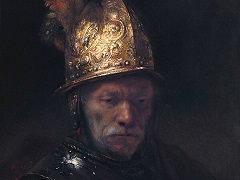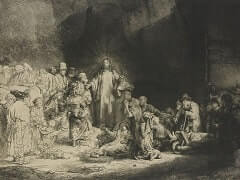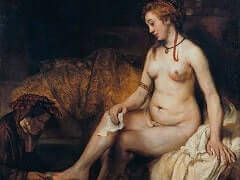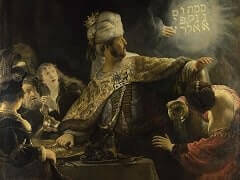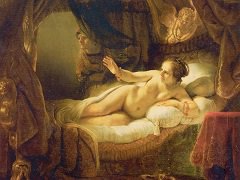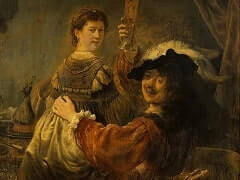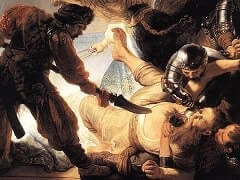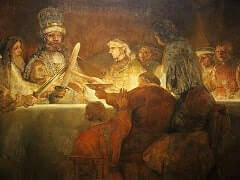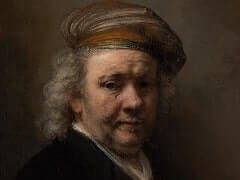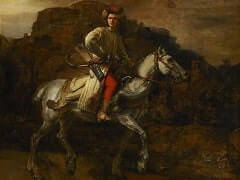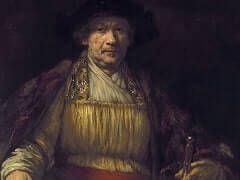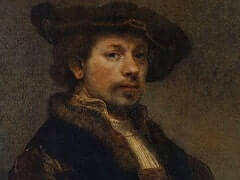A Woman in Bed by Rembrandt
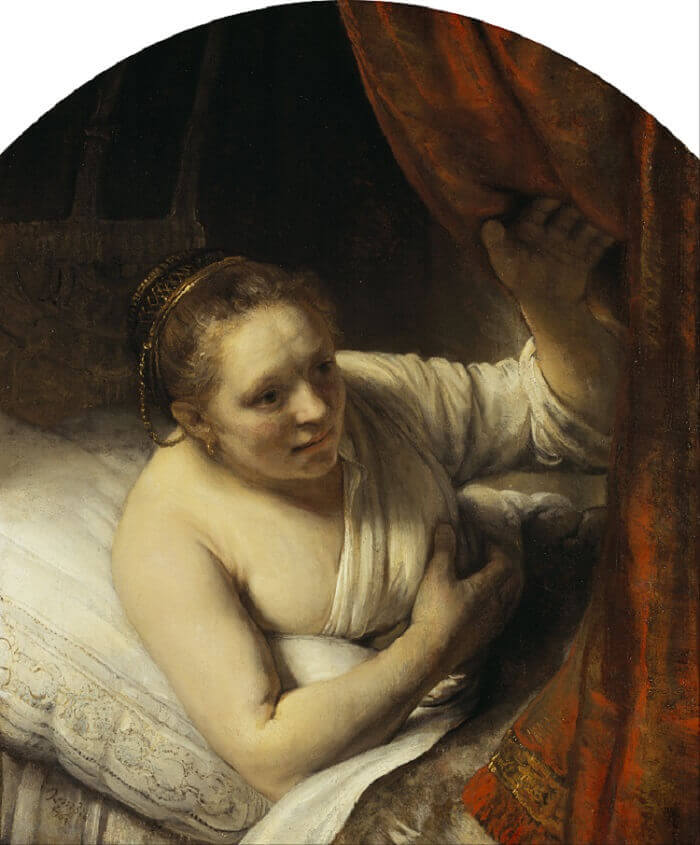
Although it cannot be documented as a painting of Hendrickje Stoffels, this work, together with a number of others of the same model painted around this period, is generally held to be of Hendrickje who entered Rembrandt's household in the late 1640s. The first mention is in 1649. Hendrickje became Rembrandt's second wife, although a provision in Saskia's will may have prevented an official ceremony. The intimacy and freshness, the warmth of light and the richness of the bed hangings make this an unusually appealing portrait of a young girl. There is also a quality of playfulness in the painting which is rare in Rembrandt's work.
The pulled-back curtain and the woman's pose make the painted image appear tantalisingly real. The illusion is enhanced by the strong lighting directed from the left and the contrasting deep shadows. While Rembrandt may have used one of his intimate circle as a model, the painting was not necessarily a portrait. The golden headdress, rich bedding and proximity to a painting by Rembrandt's teacher, Lastman, indicate that the subject was probably Sarah, wife of Tobias.


